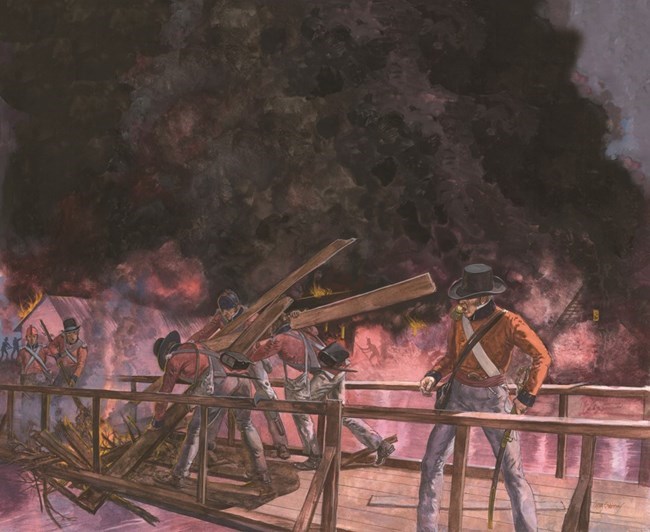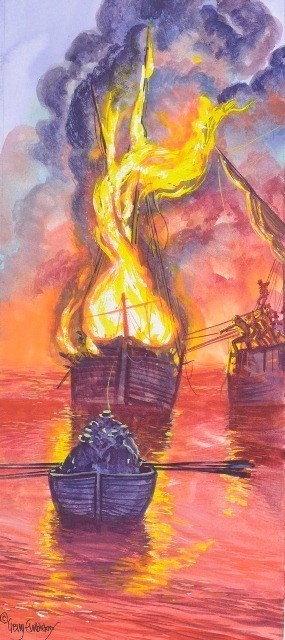
© Gerry Embleton, Excerpt from "In Full Glory Reflected" On Thursday June 18 ,1812 President James Madison signed a Declaration of War between the United States and Great Britain. Many residents in Maryland, especially those in Baltimore, the largest city in the state and 3rd in the nation as well as one of the nation’s leading ports welcomed the news. Trade in the port of Baltimore had been greatly curtailed since the trade embargos with Great Britain and France enacted by Presidents Jefferson and Madison. 
© Gerry Embleton, Excerpt from "In Full Glory Reflected" In the spring of 1814 the Chesapeake Flotilla, a force of about 20 boats, 45-70 feet long with an 18 pounder cannon in the bow and a 12-pounder in the stern attacked some ships of the British fleet off the mouth of the Patuxent River in southern Maryland. After a promising beginning the Flotilla is chased into the Patuxent and blockaded in St .Leonard’s Creek. The Flotilla manages breakout after tow weeks but can only go up the shallow headwaters of the Patuxent River where they can only wait for Cockburn and the rest of the British fleet to attack. British troops landed at the town of Benedict on the Patuxent River on August 19 and 20 to begin their advance to Washington. On August 24, they roundly defeated American forces at the Battle of Bladensburg, clearing the way for an assault on Washington that evening. The British marched down Maryland Avenue through the heart of the city to burn the Capitol building, and then headed down Pennsylvania Avenue to burn the White House. As the British entered Capitol Hill they could see the glow in the sky of the burning Washington Navy Yard. By mid-September, the fleet had advanced to the Patapsco River where about 4,500 British troops landed at North Point and began an 11-mile march to Baltimore. As the land troops made their way toward the city, British warships moved up the Patapsco River toward Fort McHenry and the other defenses around the entrance to Baltimore Harbor. |
Last updated: September 30, 2024
